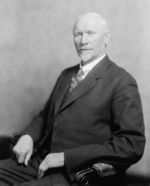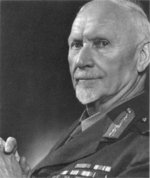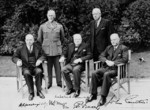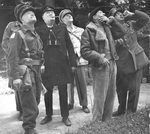Jan Smuts
| Surname | Smuts |
| Given Name | Jan |
| Born | 24 May 1870 |
| Died | 11 Sep 1950 |
| Country | South Africa, United Kingdom |
| Category | Government |
| Gender | Male |
Contributor: C. Peter Chen
ww2dbaseJan Christiaan Smuts was born to land owners Jacobus and Catharina Smuts in 1870 on the family farm at Bovenplaats, near Malmesbury, Cape Colony (now South Africa). In 1882, his older brother passed away, thus he was entitled to receiving education. In 1886, he began studying at Victoria College (now Stellenbosch University) at Stellenbosch, Cape Colony, where he would meet Issie Krige, with whom he would marry in Apr 1897. Upon completing his studies at Victoria College, he went to the University of Cambridge in the United Kingdom to study law on a scholarship and a loan from Professor J. I. Marais of Victoria College; he graduated from Cambridge in 1893. In 1894, he passed the examinations for the Inns of Court, but in the following year he decided against entering the legal profession in Britain, returning to Cape Colony instead. At the Cape Colony, he practiced law, wrote for the newspaper Cape Times, advised for Cecil Rhodes of the De Beers mining company, and became politically active with the Afrikaner Bond political party. In early 1896, after the Jameson Raid and De Beers' role in it, he resigned and briefly disappeared from public life, touring southern Africa through 1897. In Jun 1898, South African Republic/Transvaal President Paul Kruger hired Smuts as the State Attorney, returning Smuts to public service, though now he opposed the British Empire. During the Second Boer War between the Boer republics and the British colonies, he managed propaganda, logistics, communications, and various aspects for Transvaal; later in the war, he served under General Koos de la Rey as an officer of commando units. His political career took a pause after the Second Boer War, which saw defeated Transvaal being taken over as a British colony. He returned to politics in Dec 1906 after tensioned had lowered, becoming Prime Minister of the Transvaal Louis Botha's Colonial Secretary and Education Secretary. In the subsequent years, he supported Botha's push for the unification of southern Africa, which was realized with the 1910 establishment of the Union of South Africa, a British Commonwealth nation. Under Prime Minister Botha, Smuts became the Minister of Interior, the Minister of Mines, and the Minister of Defence. Shortly after, he was relieved as the Minister of Interior, but would gain control of the treasury. In 1913, Botha and Smuts were accused of hoarding too much power, though they would narrowly beat a vote of no confidence. In 1914, Smuts declared martial law during a general strike, arresting and deporting labor union leaders without trial, and shortly after putting down a potential armed rebellion before it materialized with force by Nov 1914. During WW1, re-donning his general's uniform, Smuts played a key role in the conquest of German South West Africa, but he was also accused of poor leadership that led to great numbers of unnecessary casualties during the campaign. In early 1917, he participated in the Imperial War Cabinet conference in London, England, United Kingdom. In 1918, he provided support for the creation of the British Royal Air Force. After WW1, he refocused on politics, becoming the second Prime Minister of the Union of South Africa in 1919 upon Botha's death. In 1920, he played the role of a liaison between the British and the Irish and brokered a peace deal between the two. In 1924, he was defeated in election; until his return to politics in the 1930s, he devoted himself in botany and philosophy. In 1931, Smuts became the first non-British President of the British Association for the Advancement of Science and then became the second non-British Lord Rector of the University of St Andrews in Scotland, United Kingdom.
ww2dbaseIn the 1930s, Smuts was named the Deputy Prime Minister under Prime Minister J. B. M. Hertzog's coalition government. In 1939, when Hertzog announced his neutrality stance toward Germany, Hertzog was voted out, and Smuts, who supported taking actions against Germany, was returned to the position as prime minister. Promoted to the rank of field marshal in the British Army in 1941 (he was the first South African to hold that rank), he was made a member of the Imperial War Cabinet. He played key roles in not only making available South African resources for the war effort but also in the coordination of Commonwealth nations to the same goal. His contribution to the British Empire was so great that there was a movement to nominate him as Winston Churchill's successor as the Prime Minister of the United Kingdom should Churchill die before the end of the war. In May 1945, he represented South Africa at the United Nations Charter conference in San Francisco, California, United States, and in 1947, he signed the Paris Peace Treaty; he was the only person to have affixed his signature on documents forming the League of Nations and the United Nations and documents officially ending WW1 and WW2. His focus for the British war cause during the war made him popular on the international political stage, but domestically it distanced him from the South African people, particularly the Afrikaners who historically distrusted the British. He was voted out of office in Jun 1948 and retired from politics. He was made the Chancellor of the University of Cambridge shortly after his retirement, making him the first non-British to hold that position. In Oct 1948, his son Japie passed away unexpectedly. Smuts passed away in 1950 from a heart attack at his home, Doornkloof, in Irene, South Africa.
ww2dbaseSource: Wikipedia
Last Major Revision: Jul 2012
Jan Smuts Interactive Map
Photographs
 |  |  |  |
Jan Smuts Timeline
| 24 May 1870 | Jan Smuts was born at Bovenplaats, Cape Colony. |
| 3 Sep 1919 | Jan Smuts became the 2nd Prime Minister of South Africa. |
| 30 Jun 1924 | Jan Smuts stepped down as the Prime Minister of South Africa. |
| 5 Sep 1939 | Jan Smuts became the 4th Prime Minister of South Africa. |
| 7 Mar 1941 | Field Marshal Jan Smuts arrived in Cairo, Egypt where, at an evening conference, he gave his support to Anthony Eden's firm line to commit troops to the Greek mainland. |
| 28 May 1941 | South African Prime Minister Jan Smuts was appointed as a Field Marshal in the British Army. He was the first South African to hold the rank. |
| 26 Jun 1945 | As Jan Smuts affixed his signature to the United Nations Charter at San Francisco, California, United States, he became the only person to have signed the documents forming the League of Nations and the United Nations. |
| 10 Feb 1947 | As Jan Smuts affixed his signature to the Paris Peace Treaty in France, he became the only person to have signed the documents officially ending WW1 and WW2. |
| 4 Jun 1948 | Jan Smuts stepped down as the Prime Minister of South Africa. |
| 17 Sep 1948 | Jan Smuts was named the Colonel-in-chief of the Regiment Westelike Provinsie of South Africa. |
| 29 May 1950 | Jan Smuts suffered a coronary thrombosis. |
| 11 Sep 1950 | Jan Smuts passed away in Irene, South Africa. |
| 16 Sep 1950 | The remains of Jan Smuts were cremated in Pretoria, South Africa and were later scattered on his family farm in Irene, South Africa. |
Did you enjoy this article or find this article helpful? If so, please consider supporting us on Patreon. Even $1 per month will go a long way! Thank you. Share this article with your friends: Stay updated with WW2DB: |
Visitor Submitted Comments
All visitor submitted comments are opinions of those making the submissions and do not reflect views of WW2DB.
- » WW2DB's 20th Anniversary (29 Dec 2024)
- » Wreck of USS Edsall Found (14 Nov 2024)
- » Autumn 2024 Fundraiser (7 Nov 2024)
- » Nobel Peace Prize for the Atomic Bomb Survivors Organization (11 Oct 2024)
- » See all news
- » 1,150 biographies
- » 337 events
- » 44,024 timeline entries
- » 1,241 ships
- » 350 aircraft models
- » 207 vehicle models
- » 375 weapon models
- » 123 historical documents
- » 260 facilities
- » 470 book reviews
- » 28,582 photos
- » 432 maps
Chiang Kaishek, 31 Jul 1937
Please consider supporting us on Patreon. Even $1 a month will go a long way. Thank you!
Or, please support us by purchasing some WW2DB merchandise at TeeSpring, Thank you!
9 Mar 2014 04:47:39 PM
In the First World War Smuts went to German East Africa, to fight the Germans there, while it was Botha who went obtained the surrender of the Germans in German Southw West Africa. As regards the Rebellion of 1914, it did happen (and inspired the Irish uprising in 1916) and Smuts and Botha quelled it eventually.